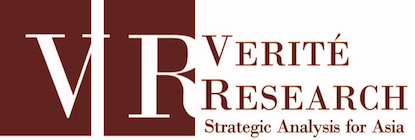Politics
Sri Lanka is a parliamentary democracy that gained independence from the British on 4 February 1948. Until 1972, however, it functioned as a dominion state, mirroring the United Kingdom’s parliamentary structure. Much of the country’s present government structure is set out in the 1978 Constitution, which established the Democratic Socialist Republic of Sri Lanka.
Within Sri Lanka’s governance structure, the central government is steered by the parliament and a cabinet of ministers. At present, the parliament has 225 members and the cabinet is composed of 42 members. Meanwhile, provincial councils and local authorities exercise devolved or delegated power at the sub-national level.
In what was considered a pivotal presidential election, Maithripala Sirisena was elected as the country’s sixth executive president in 2015. Premised on the notion of ‘good governance’, his government intended to mark a sharp contrast from the former government. In particular, his election manifesto promised the creation of a background for media to provide ‘a balanced service to the country by immediately stopping the State media being used as a propaganda weapon for the ruling party.’ This was met with a general sense of optimism as several cases of journalist abductions and intimidation of the media plagued the former government.
Following the change in government, Sri Lanka’s press freedom reportedly moved 24 slots on the World Press Freedom Index. In 2015, the island scored 141 on the index. Today, it has secured a ranking of 131.
The concept of state-owned media houses is not entirely new in the country. For instance, a local publishing house, the Associated Newspapers of Ceylon, was nationalised in 1973. Even today, the company, commonly called Lake House, remains under state-ownership.However, state-owned media has received criticism for politicised content or sharing the views of the ruling state. For instance, on 26 October 2018 there was a sudden takeover of state media institutions, reportedly by Sri Lanka Podujana Peramuna (SLPP) unions affiliated with former President Mahinda Rajapaksa. This was following President Maithripala Sirisena’s removal of the sitting Prime Minister Ranil Wickremesinghe and appointment of Mahinda Rajapaksa in Wickremesinghe’s place. Subsequently, the president issued a gazette notification on 4 November to prorogue parliament until 14 November and proceeded to dissolve parliament on 9 November. Yet on 13 December, the Supreme Court unanimously ruled the president’s dissolution was unconstitutional. On 16 December, the president reappointed Ranil Wickremesinghe to the post of prime minister, thereby bringing an end to the 51-day political impasse.
Privately owned media houses are also not always free of political influence.There are cases of radio stations and print publications owned by politically influential families. Newspapers and broadcast companies may not openly be associated with politicians. Yet their parent companies may either be owned or managed by close relatives of politically influential individuals.
Sources
Cabinet Office Sri Lanka. Present Cabinet.
Retrieved from Office of the Cabinet of Ministers- Sri Lanka on 27 July 2018.
International Federation of Journalists, (2015). Press Freedom in South Asia 2014-2015.
Retrieved from The Freedom Frontier on 27 July 2018.
Lake House. Our History.
Retrieved from Lake House on 27 July 2018.
Parliament of SriLanka. Party Composition of Parliament.
Retrieved from Parliament of Sri Lanka on 27 July 2018.
Perera, G. (2015). The Maharaja and The Political Media Mafia.
Retrieved from Colombo telegraph on 27 July 2018.
Secretariat of the Constitutional Assembly Sri Lanka. Constitutional History.
Retrieved from Constitutional Assembly on 27 July 2018.


